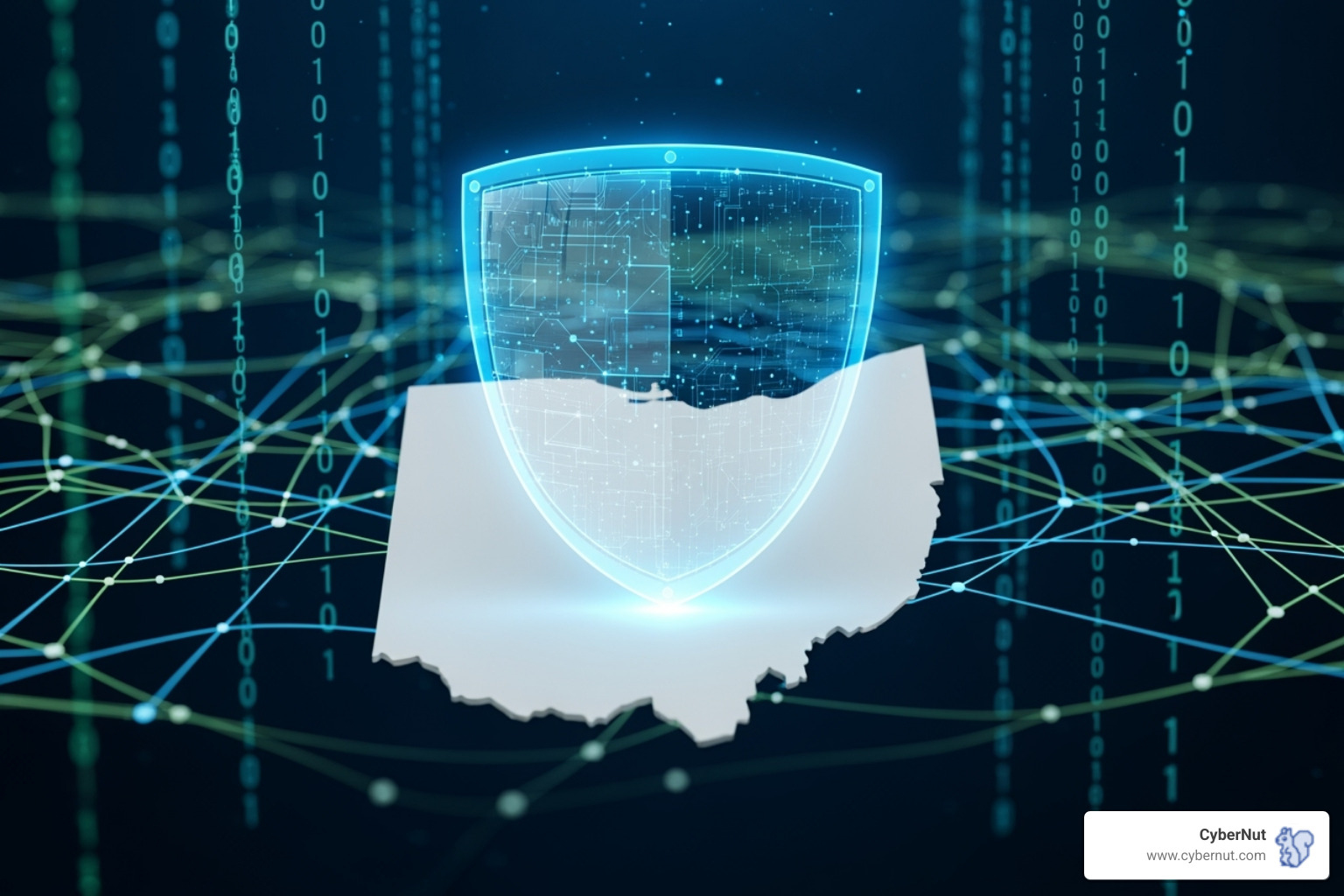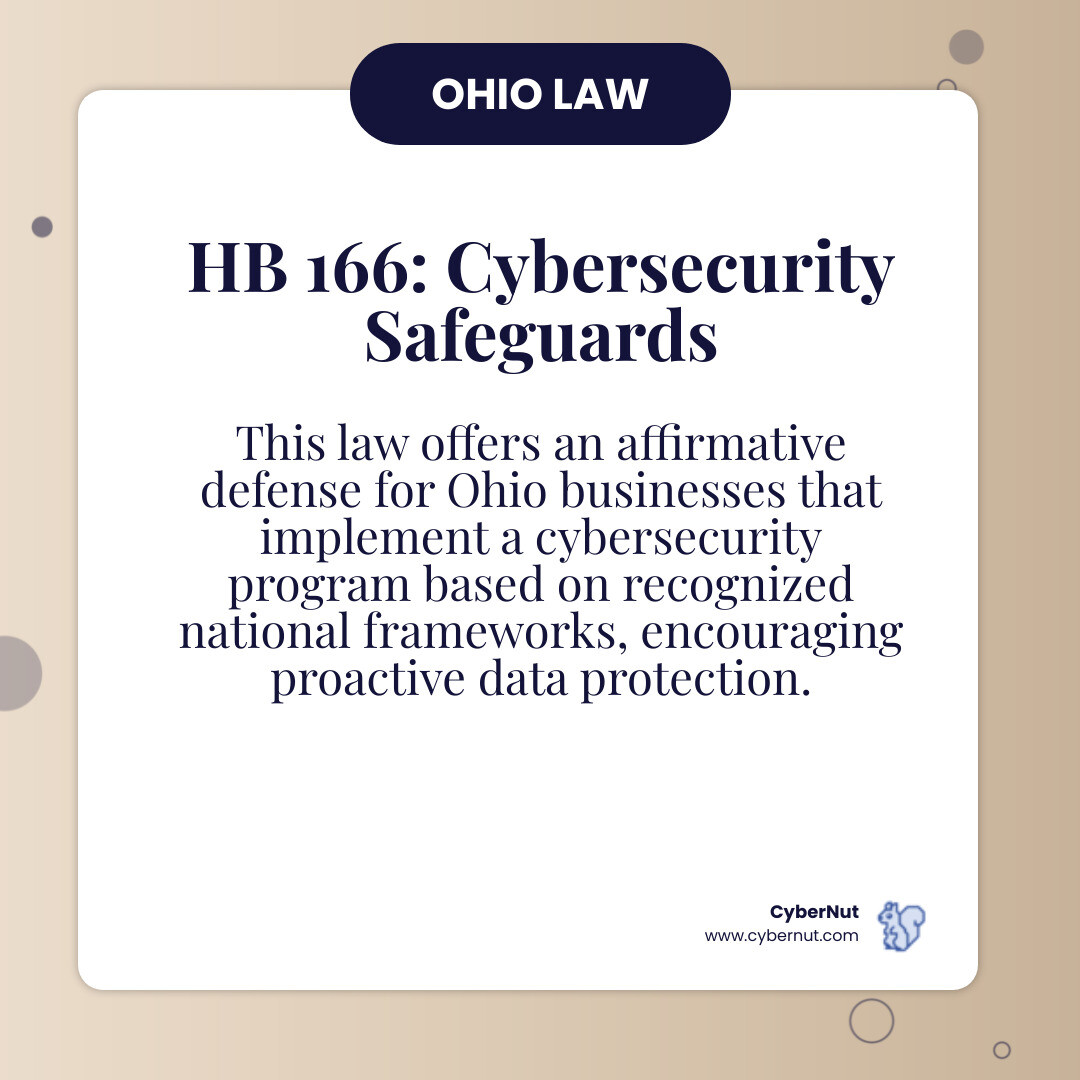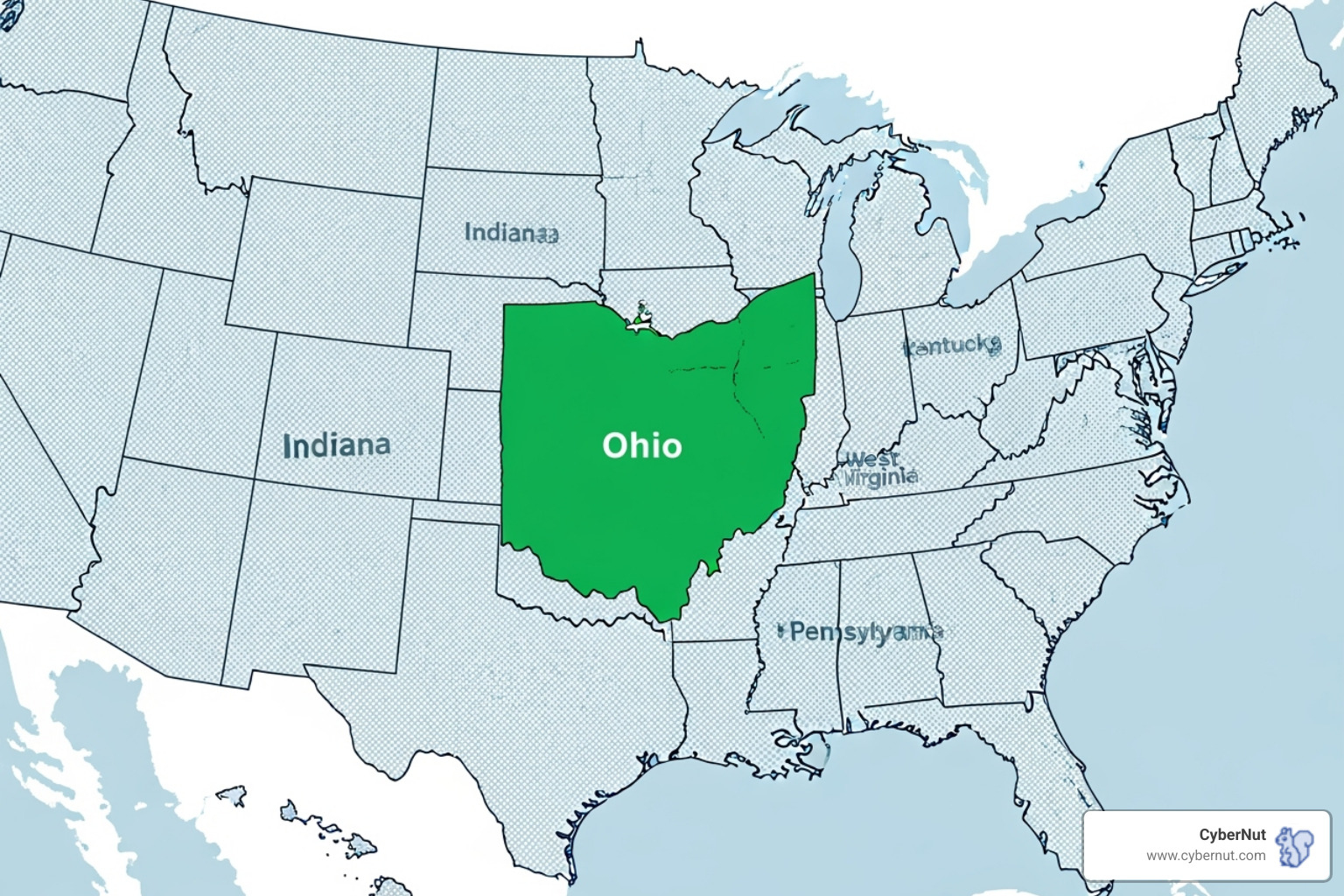
Oliver Page
Case study
October 13, 2025

The Ohio Cybersecurity Safeguards Law (HB 166) is actually a 2019 state budget bill that provided funding for cybersecurity initiatives, not a comprehensive data protection mandate. Here's what you need to know:
Quick Facts:
If you're searching for Ohio's actual cybersecurity compliance framework, you're likely looking for the Ohio Data Protection Act (SB 220), which provides legal safe harbor for organizations that adopt recognized security frameworks.
As a K-12 IT Director, understanding this distinction is critical. HB 166 created resources to help you train your staff and students, while SB 220 offers legal protection if you implement proper cybersecurity controls.
The confusion around HB 166 stems from how it's often mischaracterized online. While the bill did invest in cybersecurity education and emergency preparedness, it wasn't designed to regulate how schools or businesses protect data. Instead, it opened doors to training resources that your district can leverage today.
Want to know how vulnerable your school really is? Get a free phishing audit at https://www.cybernut.com/phishing-audit to see where your staff needs the most support.

Contrary to what its name might suggest, the Ohio Cybersecurity Safeguards Law (HB 166) is not a legal document filled with mandates and penalties. Enacted in 2019, House Bill 166 was Ohio's main operating budget bill. Its purpose was not to create a rulebook but to make a strategic investment in the state's cyber defense capabilities.
Instead of telling organizations what they must do, HB 166 focused on giving them the resources to learn how to do it better. It's the difference between a strict building code and funding for a construction training center. For K-12 IT directors, this is good news: HB 166 created opportunities and resources without adding another compliance burden to your plate.
HB 166 was enacted as Chapter 10 of Ohio's 2019 biennial state budget. Its primary role was to allocate funding for cybersecurity initiatives across the state. It did not create new data protection requirements for schools or businesses, nor did it establish penalties for breaches. Instead, it invested in training, infrastructure, and preparedness.
The centerpiece of HB 166's cybersecurity funding was the creation of a cyber range—a high-tech training facility for practicing cyberattack defense in a safe, realistic environment.

This cyber range was designed to serve a wide audience:
The range also supports emergency preparedness training, ensuring Ohio is ready to respond effectively to major cyber incidents. For your school district, this means potential access to state-funded training resources for your IT team and staff. As discussed in Cybersecurity Training for Students and Cybersecurity Training Empowering K-12 Staff Against Cyber Threats, hands-on training is the foundation of a strong defense.
The bottom line is that HB 166 didn't tell you what to do, it provided tools to help you do it better. This is a smart approach to building a more cyber-resilient state, one trained person at a time.
If HB 166 was about funding, what actually protects your school district legally? The answer is a different law: Ohio's Data Protection Act, also known as Senate Bill 220 (SB 220).
Enacted in 2018, SB 220 introduced the innovative concept of a safe harbor or affirmative defense. This legal shield rewards organizations for implementing strong cybersecurity before a breach happens. For K-12 districts, this is critical: if you can demonstrate that you have reasonable cybersecurity controls based on recognized frameworks, you gain immunity from certain civil lawsuits following a data breach.
This transforms cybersecurity from a pure expense into a strategic investment with tangible legal benefits. It's an insurance policy that rewards you for being proactive.
The mechanics of SB 220's safe harbor are straightforward. If your organization experiences a data breach, you may be immune from tort actions (civil lawsuits alleging negligence) if you can prove you had a written cybersecurity program that reasonably followed an accepted framework.
Key aspects include:
The safe harbor applies to breaches involving both personal information and restricted information, covering most of the sensitive data your district handles, from student records to staff payroll. This approach encourages proactive defense, and if an incident occurs despite your best efforts, you have documentation showing you acted responsibly.

To qualify for the safe harbor, your program must reasonably conform to a recognized framework. You have the flexibility to choose what works best for your district.
Other frameworks may apply depending on the data you handle, such as the HIPAA Security Rule for health information, the GLBA Safeguards Rule, FISMA for federal information, and PCI DSS if you process credit card payments.
The key is to choose a recognized framework, implement it thoughtfully, and document your compliance. This not only improves your security but also builds your legal shield.
Wondering where your biggest vulnerabilities actually are? Before diving into a framework, understand your current risk. Get a free phishing audit at https://www.cybernut.com/phishing-audit to see where your staff needs support—because even the best technical controls can't fix the human factor.
Beyond the funding from HB 166 and the safe harbor from SB 220, Ohio has a broader legal framework for cybersecurity. This includes data breach notification requirements that affect every organization in the state, including K-12 school districts.
Every U.S. state has security breach notification laws. If a breach of personal information occurs, there are specific legal obligations to inform affected individuals and, often, state authorities. Ohio has its own well-defined requirements that schools must follow.
Ohio's primary data breach notification law is Ohio Revised Code (ORC) 1349.19. It outlines what schools must do when a security breach compromises personal information.
A breach triggers these requirements when unencrypted computerized data defined as "personal information" is accessed by an unauthorized person, creating a material risk of identity theft or fraud. In Ohio, personal information is typically a name combined with a Social Security number, driver's license/state ID number, or financial account information.
Once a breach is determined, the law requires notification to affected residents expeditiously and without unreasonable delay, and no later than 45 days after that determination, unless law enforcement requests a delay for an investigation. The notification must explain what happened, what information was exposed, and what steps both the organization and the individual can take.
If a breach affects more than 1,000 Ohio residents, you must also notify the Ohio Attorney General. For smaller breaches, only affected individuals need to be informed. In cases where direct notification is prohibitively expensive (over $250,000) or impractical (over 500,000 people), substitute notice via your website or media outlets may be allowed.
The best way to avoid these obligations is through prevention. Implementing proactive measures encouraged by SB 220 and investing in security awareness training significantly reduces the likelihood of a breach. Wondering where your vulnerabilities lie? Get a free phishing audit at https://www.cybernut.com/phishing-audit to identify where your team needs support.
Ohio's incentive-based safe harbor (SB 220) is unique compared to many states that have taken more prescriptive or punitive approaches. Instead of just imposing mandates, Ohio's message is: "If you adopt recognized security frameworks, we'll help shield you from costly litigation." This doesn't mean Ohio lacks other cybersecurity efforts; for example, Ohio SB 52 created Civilian Cyber Security Reserve Forces and a CISO for the Secretary of State.

Nationally, many states are shortening notification timelines, expanding the definition of personal information, and requiring government entities to report breaches. The trend toward providing affirmative defenses for reasonable security practices is growing, and Ohio was ahead of the curve in creating a clear, actionable safe harbor.
For K-12 districts, this means we operate in a state that values proactive protection. While we must adhere to breach notification laws, we also have a unique opportunity to gain legal protection by voluntarily implementing a robust cybersecurity program. For more on how states compare, see our State Cybersecurity Laws page.
Navigating state legislation can be confusing. The Ohio Cybersecurity Safeguards Law (HB 166) is particularly misunderstood. Let's clear up some common questions.
The law refers to House Bill 166 from the 133rd General Assembly, enacted in 2019 as part of Ohio's main operating budget. Its primary cybersecurity function was to provide funding for initiatives like a statewide cyber range for training. It is not a compliance framework and does not impose security mandates on schools or businesses.
No, Ohio does not mandate a single, specific framework for all organizations. Instead, the Ohio Data Protection Act (SB 220) offers a legal safe harbor. This means if your organization voluntarily adopts and complies with a recognized cybersecurity framework (like NIST or ISO), you can gain immunity from certain data breach lawsuits. It's an incentive-based "carrot" approach, not a punitive "stick."
To build resilience and qualify for legal protection, K-12 districts should focus on these key steps:
The stakes are high for schools, but a proactive approach combining training, framework adoption, and risk assessment can build real resilience.
Want to see where your district stands right now? Get a free phishing audit at https://www.cybernut.com/phishing-audit to identify where your staff needs the most support. It's a quick, eye-opening way to understand your actual risk level.
Understanding Ohio's cybersecurity legislation is key to protecting your students, staff, and community. Here are the key takeaways for your K-12 district:
However, even the best policies fail if a staff member clicks on a phishing email. A well-meaning teacher can accidentally compromise your entire network. That's why ongoing security awareness training is not optional—it's the foundation of your entire defense.
At CyberNut, our training is designed for the unique challenges of K-12 districts. We know your staff is busy, so our approach is custom, low-touch, and engaging. Through automated, gamified micro-trainings, we help your staff recognize threats before they become disasters.
Ready to see where your vulnerabilities are? Get a free phishing audit for your school at https://www.cybernut.com/phishing-audit. Knowing your weak spots is the first step to strengthening them.
Ohio has provided the tools and incentives. Now it's up to us to use them wisely by investing in our people, adopting frameworks, and building a culture of security.
Want to stay on top of the latest cybersecurity trends for K-12 education? Explore CyberNut's News and Insights for ongoing guidance and support.

Oliver Page

Some more Insigths


Back